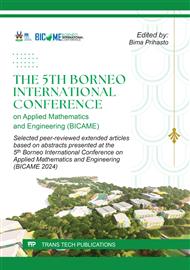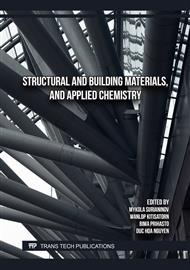p.47
p.57
p.63
p.75
p.85
p.93
p.101
p.109
p.115
Synthesis and Characterization of Chitosan/Alginate Hydrogel Using CaCl2 as a Crosslinking Agent
Abstract:
Hydrogels, a type of polymer, can be synthesized from both natural and synthetic sources, including some biopolymers like alginate and chitosan, making them particularly interesting for biomedical applications. The popularity of hydrogels in the medical field is due to their high-water content, flexibility, and biocompatibility. Hydrogels, which can swell in a hydrated state, are capable of controlling the release of active substances in pharmaceutical and biomedical applications. Alginate and chitosan exhibit polyanionic and polycationic properties when dissolved under appropriate conditions, allowing them to interact with each other. This interaction occurs through the carbonyl groups of alginates and the amino groups of chitosan. Alginate also has the advantages of being non-toxic, biodegradable, biocompatible, and non-allergenic. Therefore, these two materials readily form polyelectrolyte complexes. The use of calcium chloride in producing hydrogels is due to its ability to perform ionic cross-linking on polymers such as alginate. Calcium chloride reacts with the carboxylate groups in alginate, forming stable cross-links between polymer chains. This cross-linking process results in a three-dimensional network that provides structure and stability to the hydrogel. The benefits of adding CaCl2, in addition to facilitating cross-linking, include increasing the viscosity of the alginate solution, which enhances the formation of the alginate matrix. This study demonstrates that the ratio of chitosan to alginate significantly influences the properties of the resulting hydrogel, impacting its swelling ratio, stability, and ultimately, its potential for biomedical applications. Specifically, the optimal ratio of 5A:1C exhibited superior swelling and gel fraction characteristics, suggesting its potential suitability for controlled drug delivery systems. The successful cross-linking confirmed by FTIR analysis further strengthens the viability of this specific composition for biomedical applications.
Info:
Periodical:
Pages:
85-91
Citation:
Online since:
December 2024
Keywords:
Price:
Сopyright:
© 2024 Trans Tech Publications Ltd. All Rights Reserved
Share:
Citation:



